Dear exiles,
Welcome to the Exiled Lands. In this harsh and unforgiving landscape, only the strongest and fiercest will survive the challenges that stand before them. Before you get started on your barbarian adventure we’ve gathered some basic tips you should learn in order to survive, build and dominate in Conan Exiles.
Your cross awaits.
Starting off
From the main menu, you can choose to play online or jump into a single player/co-op session. Playing online pits you against other exiles in a struggle for survival on servers run by Funcom’s partnered server provider, or on private servers run by members of the community. In single player, it’s just you against the dangers of the Exiled Lands. In a single player game, you start off by choosing a difficulty level. This will set things like gathering rate, how much experience you gain and what you lose upon death. You can also set custom settings if you want. When playing single player, you will also have access to the admin panel, which allows you to activate certain cheats and spawn in weapons and items. If you’re playing the single-player mode you have the option of inviting up to three friends to join you in a co-op game via an invite button in the in-game menu, or your friends can join your session by going through your profile. On multi-player servers, you’re subject to the rules and settings of the server you choose. Only server admins can access the admin panel, and can kick and ban players as they like.
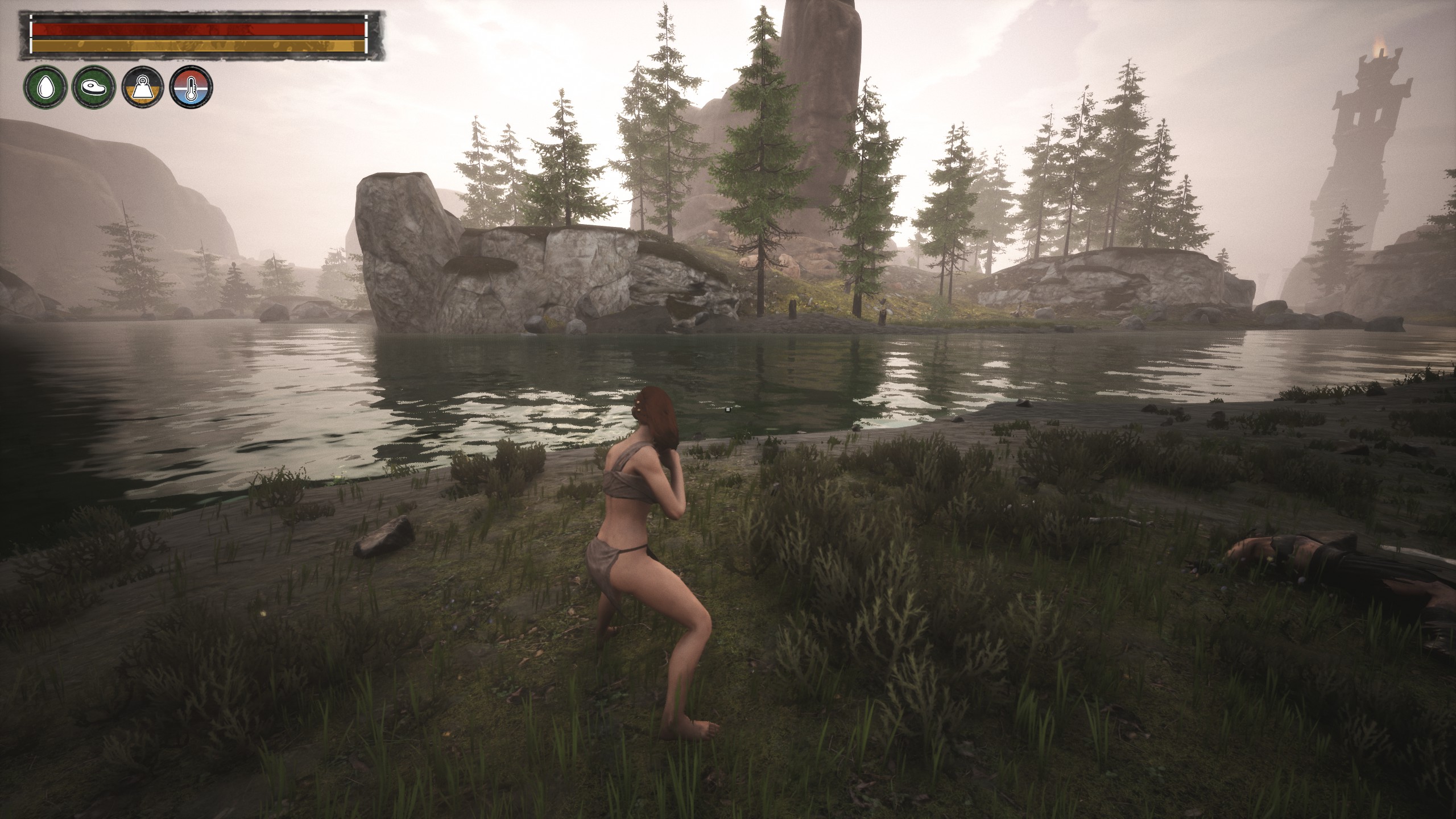
The upper left hand corner is where you’ll find the information you need about the current state of your character. The red bar is your Health meter. Below that is your Stamina bar. Then, going from left to right, are icons representing your current level of Water, Food, Inventory Weight and Temperature. Just above your Health meter is your Experience Points Bar.
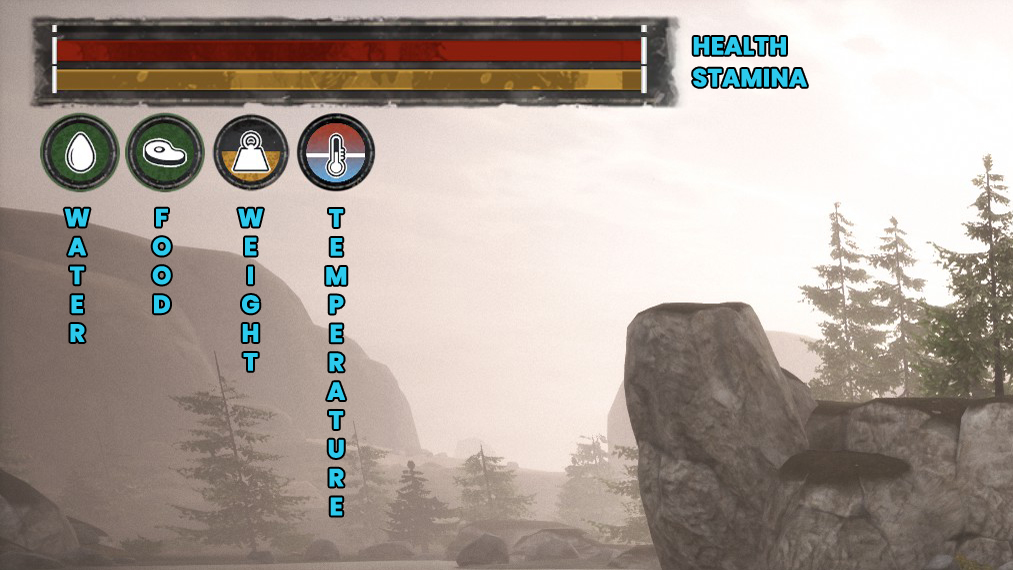
On-screen prompts will display any status effect currently affecting you. These can include Poison, Corruption, Thirst and Starvation.

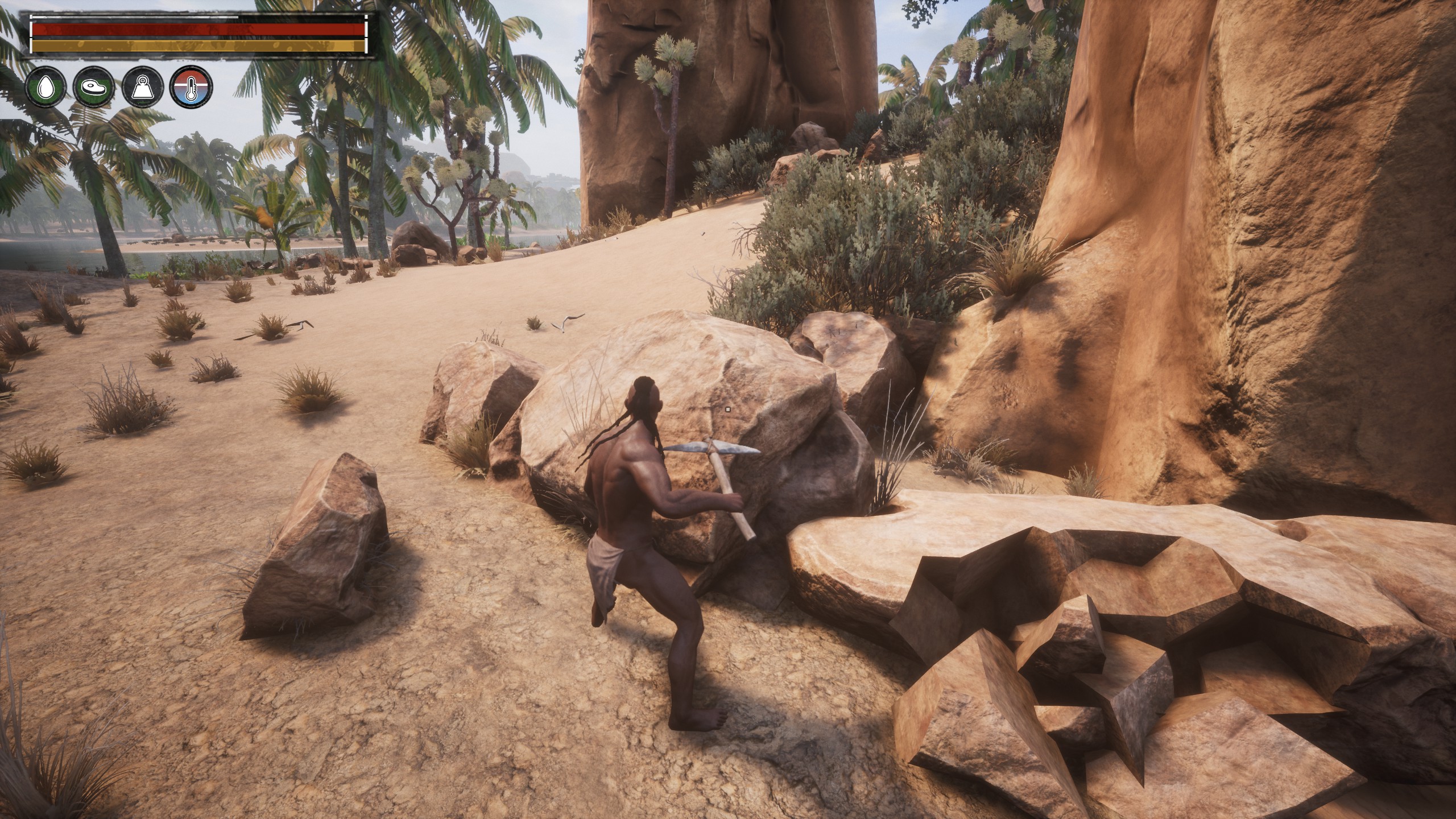
Harvesting
Harvesting resources is an essential part of the crafting and survival aspects of Conan Exiles. Resources let you craft and upgrade tools, weapons, building pieces and armor. You can harvest resources by interacting with special nodes or by picking them up off the ground. In the beginning you gather sticks and stones, but you will eventually unlock new tools that allows you to harvest more resources at a faster rate. Some tools are specialized and can give you different things from the same resource. A Cleaver will give you more meat from an animal corpse, whereas a Skinning Knife is excellent for collecting hide.
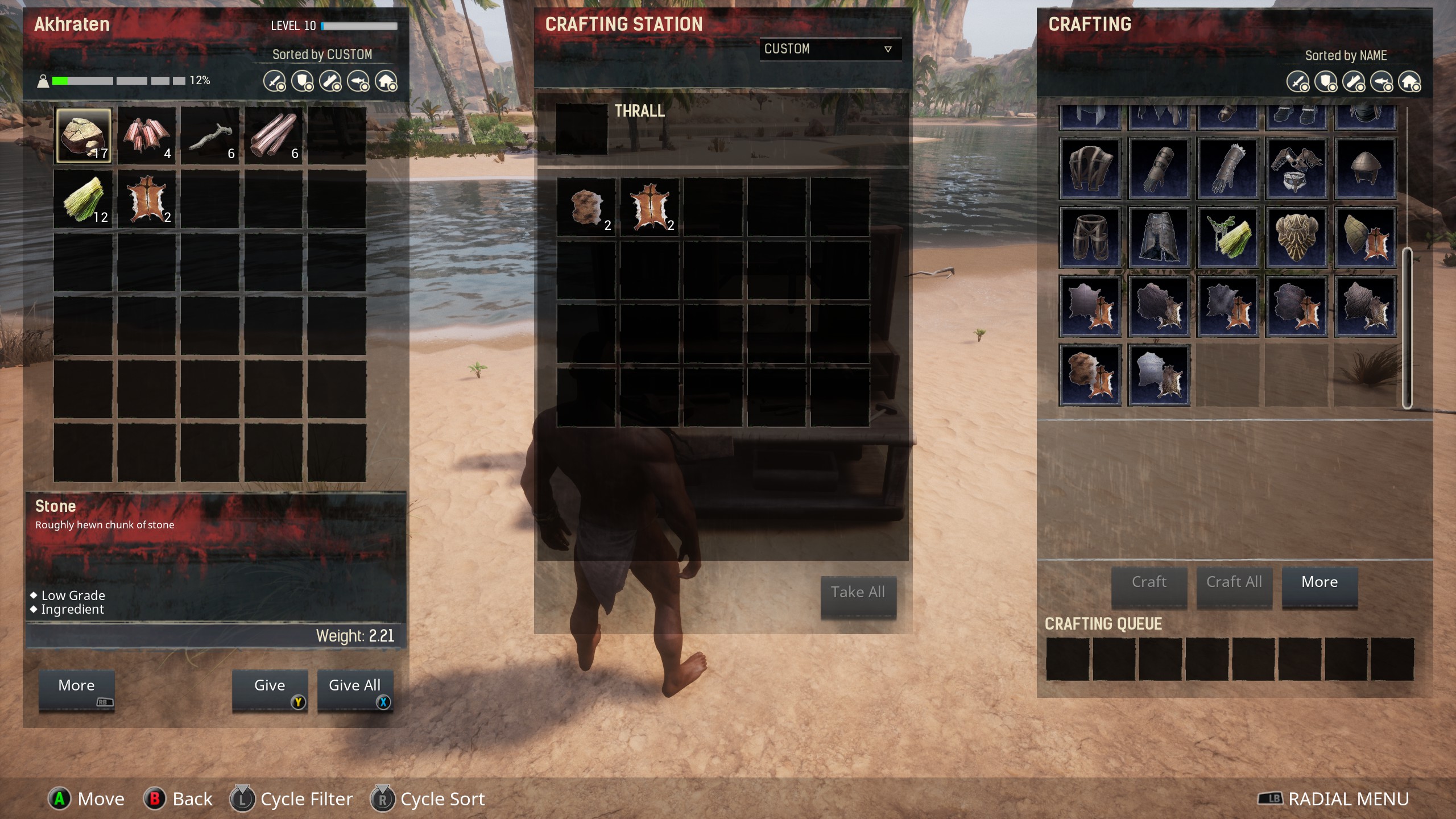
Crafting
Most of the crafting in the game can be done from the crafting screen, but some items need a special crafting station or machine to be made. Crafting stations require you to manually select and craft each individual item. If a recipe requires a crafting station it will be listed in the Feats menu. These have their own inventories where the crafting is done. Machines need fuel to work, but will continuously make new items and ingredients if there’s fuel to burn.

Building
Surviving other players and the creatures and elements of the Exiled Lands is a core part of Conan Exiles. Building a shelter is vital for survival and it’s important to build something fast. Rudimentary building pieces will be available quickly and can be crafted from the crafting screen as long as you have the prerequisite materials.
Surviving other players and the creatures and elements of the Exiled Lands is a core part of Conan Exiles. Building a shelter is vital for survival and it’s important to build something fast. Rudimentary building pieces will be available quickly and can be crafted from the crafting screen as long as you have the prerequisite materials.
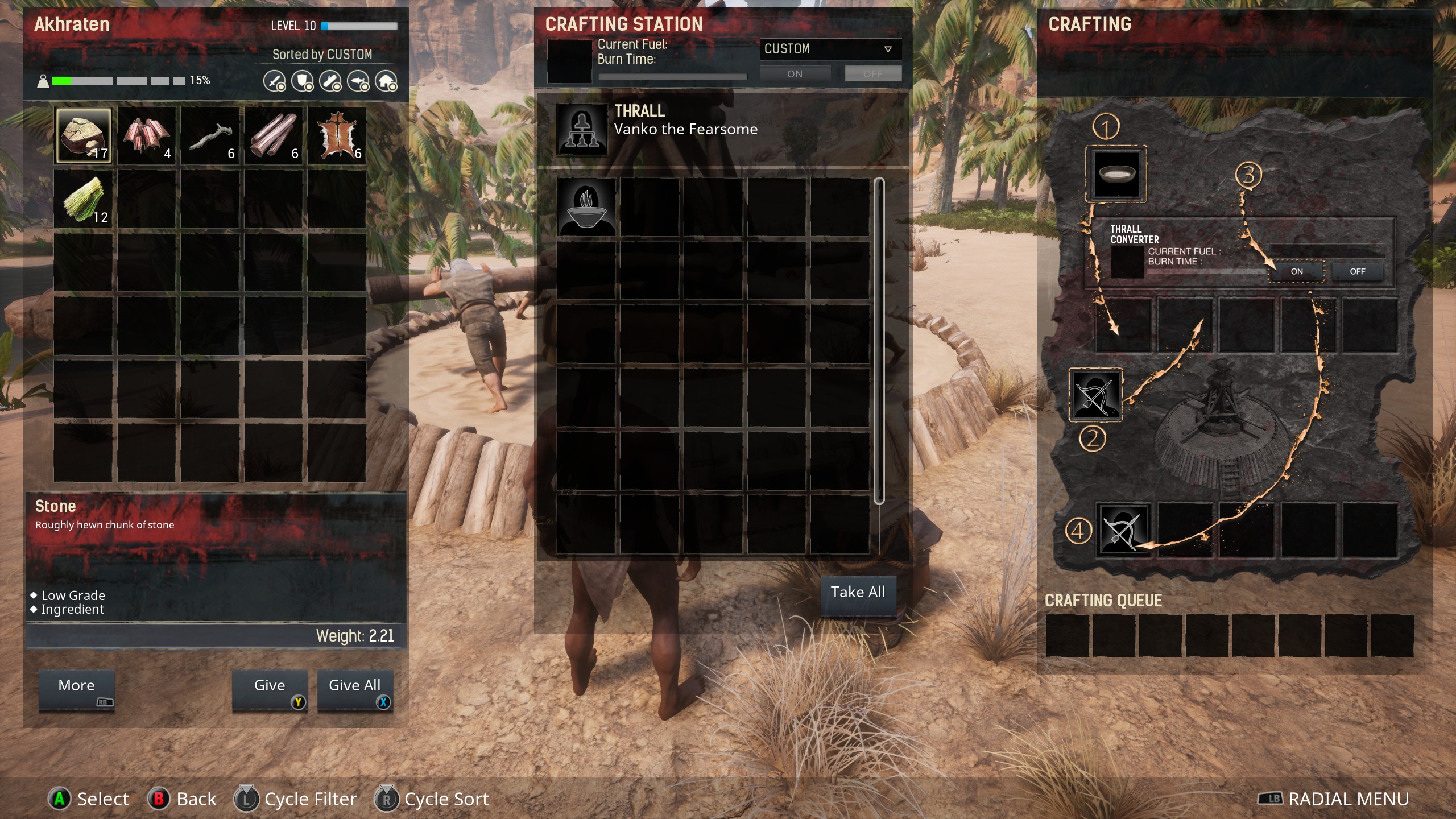
Capturing and breaking thralls
Human NPCs in the Exiled Lands can be captured and brought back to your base to be broken on the Wheel of Pain. They then become your thralls. Thralls can be set to work at your crafting stations to unlock new recipes or speed up crafting. They can also stand guard and protect you from enemies. To break enemy NPCs you need three things: Fiber bindings, a truncheon and a Wheel of Pain. These can all be unlocked with the Thrall Taker feat at level 10. The truncheon will knock someone out after a few hits, leaving them ready to be tied up using the fiber bindings. After that you can drag them back to your Wheel of Pain and place them on it to convert them into thralls. The Wheel of Pain uses food as fuel, and certain foods are more effective at breaking NPCs than others.
Human NPCs in the Exiled Lands can be captured and brought back to your base to be broken on the Wheel of Pain. They then become your thralls. Thralls can be set to work at your crafting stations to unlock new recipes or speed up crafting. They can also stand guard and protect you from enemies. To break enemy NPCs you need three things: Fiber bindings, a truncheon and a Wheel of Pain. These can all be unlocked with the Thrall Taker feat at level 10. The truncheon will knock someone out after a few hits, leaving them ready to be tied up using the fiber bindings. After that you can drag them back to your Wheel of Pain and place them on it to convert them into thralls. The Wheel of Pain uses food as fuel, and certain foods are more effective at breaking NPCs than others.
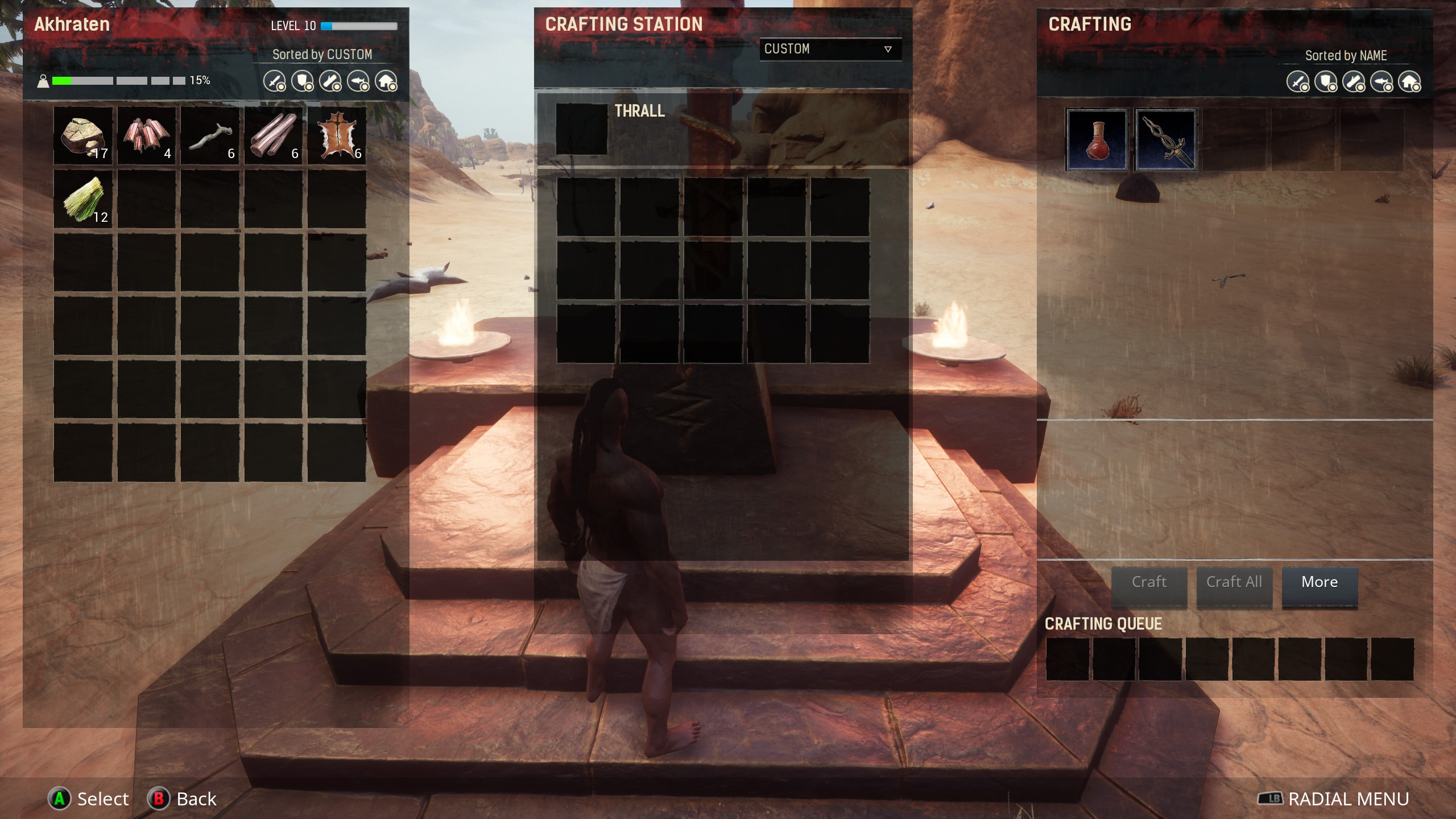
Religion
Conan’s world is balanced on the edge between barbarism and civilization, but it’s also a world where the gods themselves sometimes interfere in the lives of mortals. During character creation you can choose a god to worship, with six available at launch: Crom, Set, Yog, Mitra, Ymir and Derketo. Gods give special crafting items and bonuses to those who worship them. Crom is different than the others. In-fiction, Crom does nothing for those who worship him, and calling upon him will only lead to misfortune. In the game he’s essentially the agnostic option, for players who don’t want to engage with the religion system. Crom requires nothing, he gives nothing and does nothing.
Worship happens through an altar dedicated to your god. These will be unlocked when choosing your god during character creation. Special resources harvested from NPCs and other players can be used to craft items at the altar, or sacrificed to gain favor from your chosen god. Favor can be used to upgrade an altar to the next tier, which in turn unlocks new crafting opportunities.
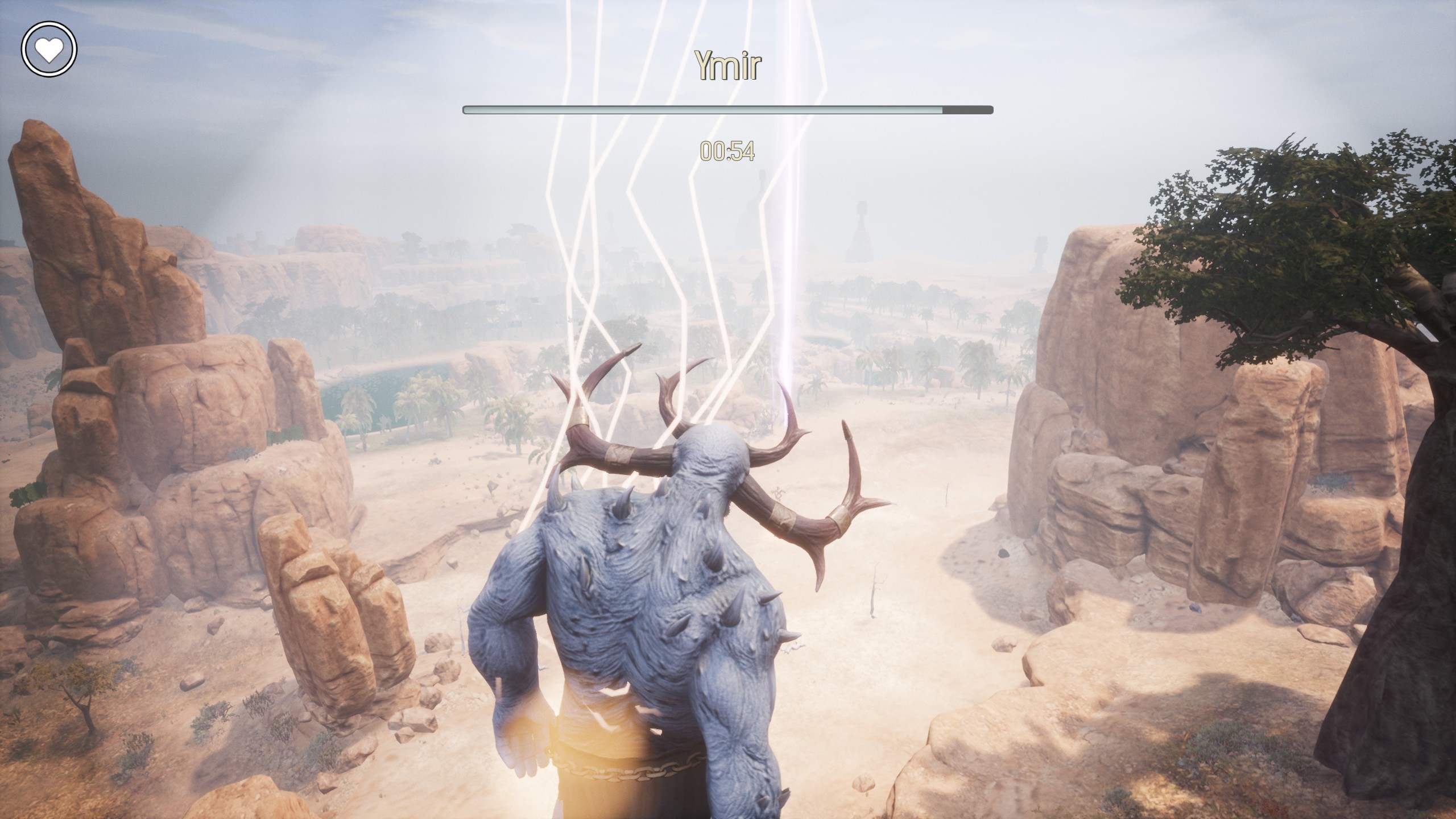
Avatars
Avatars are the ultimate expression of your religious fervor in the game. These are physical manifestations of your god that can be summoned to smite your enemies. To summon an avatar you’ll need a tier 3 altar and an arch priest thrall. The summoning spell is an item that you then can craft at your altar and take with you into the Exiled Lands. Crafting this spell will destroy both your religious thrall and your altar. Once the crafting process is done you have 48 hours to use the spell before it decays and is destroyed.

While avatars are powerful they are not completely invincible. A special defensive dome can be erected around a tier 3 altar that will instantly destroy any avatar that touches it. Doing damage to an avatar will eventually remove it from the physical realm. In addition to protecting you from avatars the shield dome will also protect you from enemy projectiles, but keep in mind that it’s not permanent. It will disappear after 36 hours.
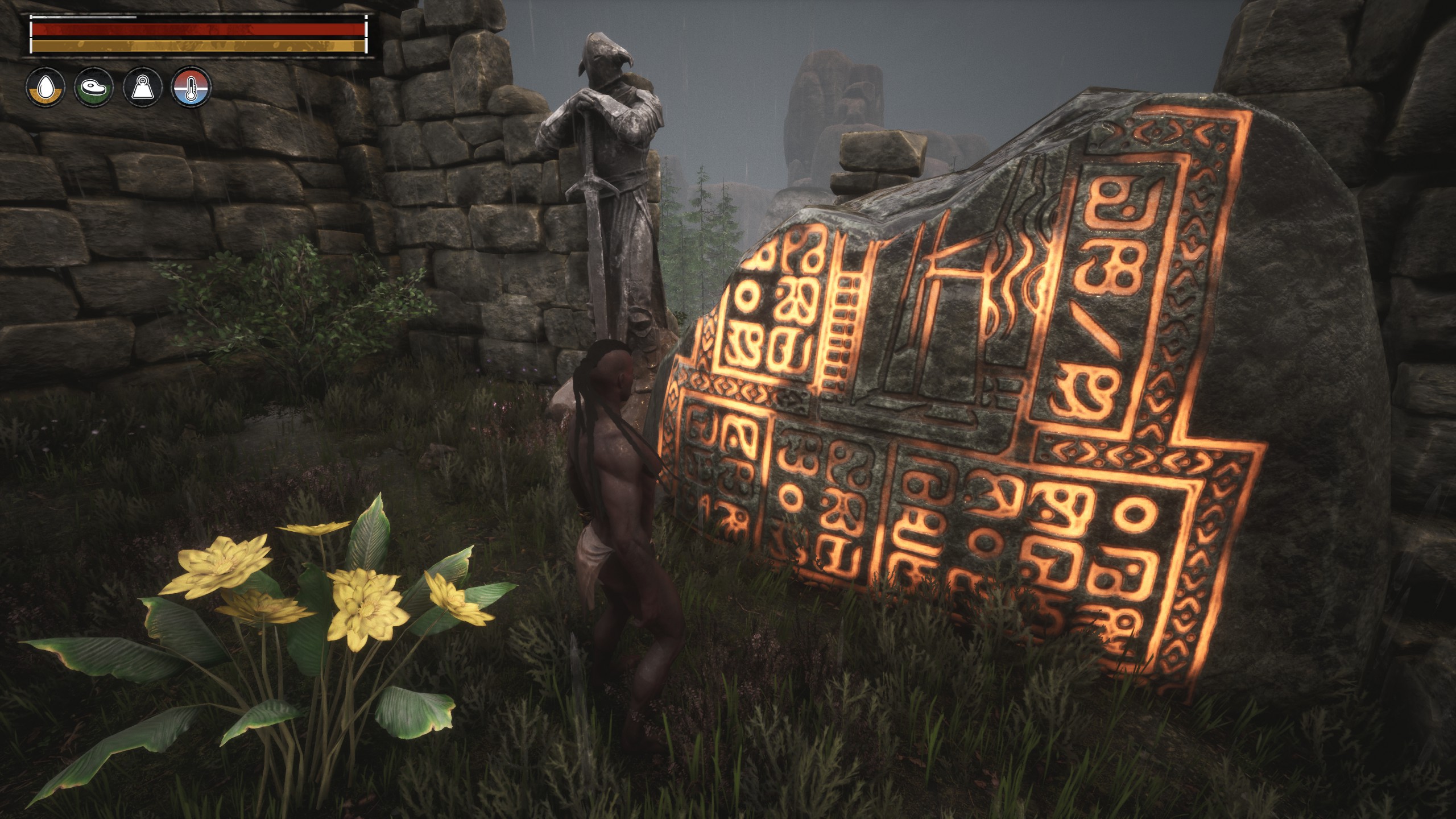
Lore
While avatars are powerful they are not completely invincible. A special defensive dome can be erected around a tier 3 altar that will instantly destroy any avatar that touches it. Doing damage to an avatar will eventually remove it from the physical realm. In addition to protecting you from avatars the shield dome will also protect you from enemy projectiles, but keep in mind that it’s not permanent. It will disappear after 36 hours.
NPCs found throughout the game will offer up information about the Exiled Lands and help you gain some insight into life as an exile. You will also discover clues about the ancient civilization that once inhabited this place as you play and explore. Their magic still resides in many of their now abandoned homes. What appears to be instructions for their subjects can be found half buried in the sand dunes. Explore far and wide to see ghosts of the ancient past and glean information from their ways.

The upper left hand corner is where you’ll find information you need about the current state of your character. The icons represent, in order from right to left, your Health, Stamina, Water, Food, Experience points, Weight and Temperature.

Other on-screen prompts will display any status effect currently affecting you. These can include poison, exhaustion, corruption, thirst and starvation.

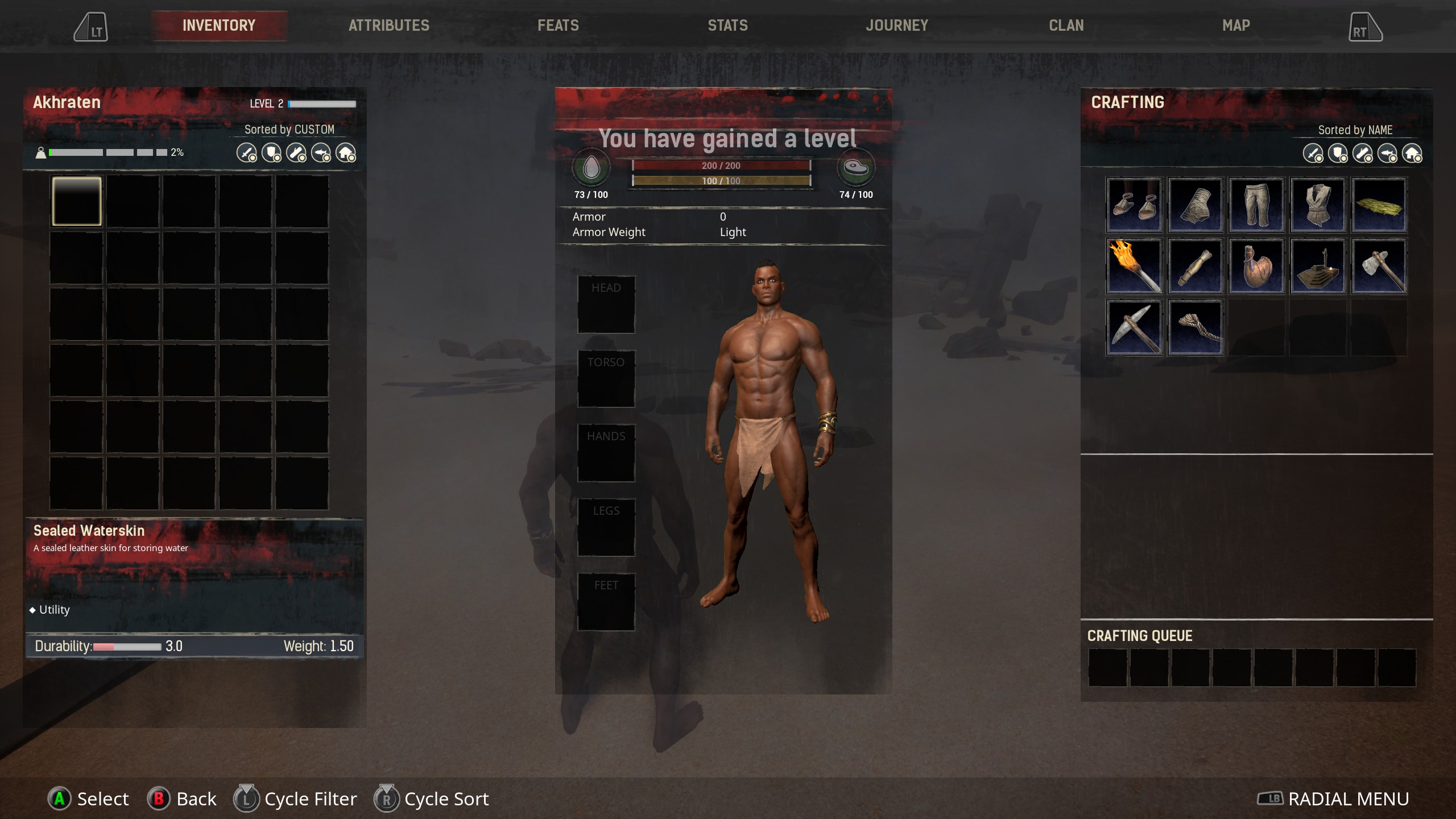
The Menu button opens your inventory and character screen. On the left side is your inventory, with everything you’ve gathered in the game. Here you can move items to the quick slot radial menu.
The middle window is your character screen, where you find your character’s attributes and currently equipped clothing. Above your character’s head is your current level of Health, Stamina, Water, Food, Armor rating and Armor Weight.
To the right is the crafting window. Here you use the resources you’ve gathered to create tools, clothes, weapons, building pieces and other items. Click on any crafting recipe you have learned to see what resources you need to create what you’ve selected. If you have enough just hit the “Craft” button and the rest will take care of itself. Certain items, like Iron Swords, require a crafting station to make.
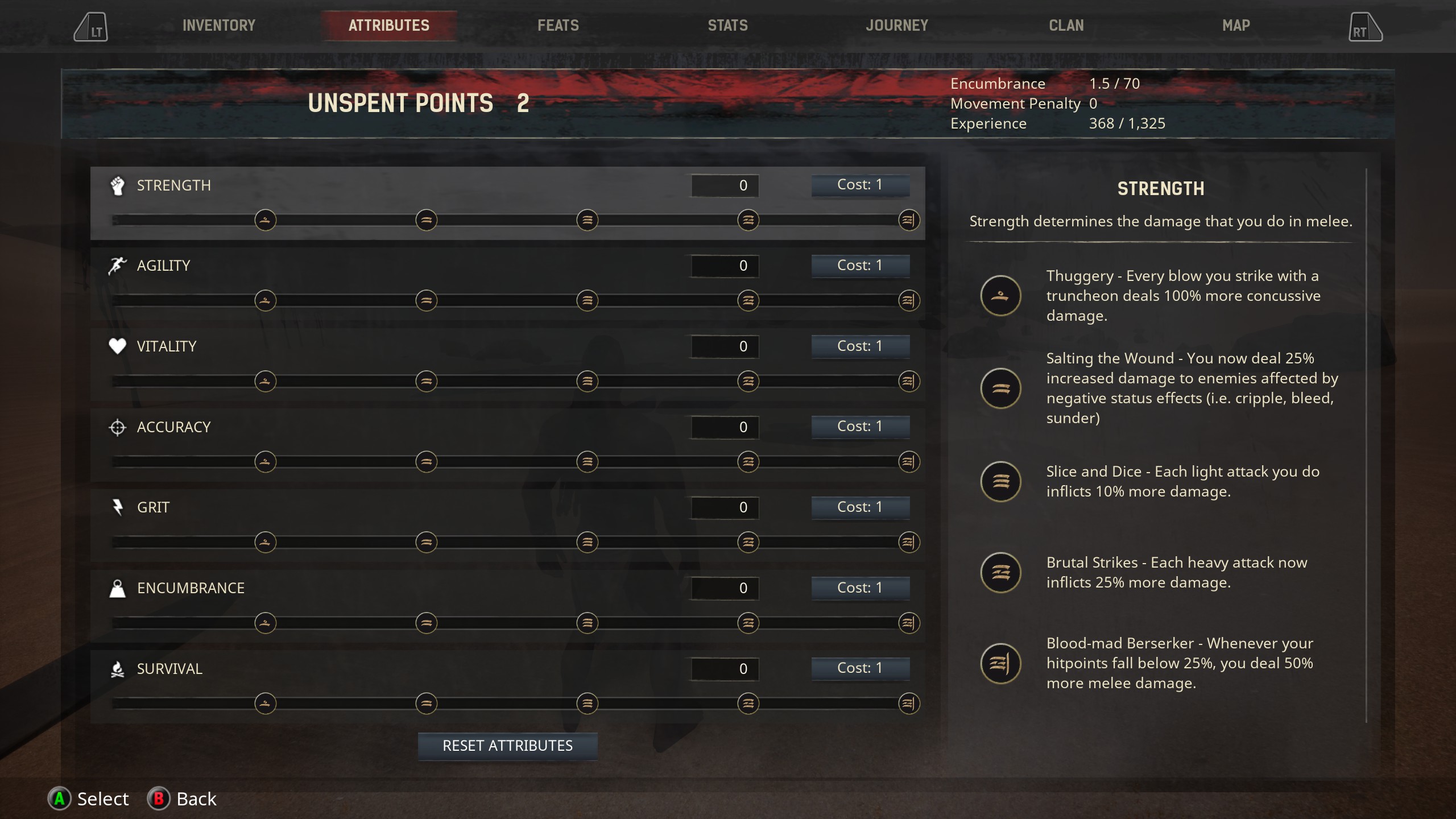
stats
As you level up you gain Attribute Points you can use to improve your character in various ways. The SAVAGES attributes do different things based on where you allocate your points: Strength determines your melee damage. Agility has an effect on armor and our ability to move. Vitality determines the size of your health pool. Accuracy determines the damage you do with ranged weapons. Grit determines the size of your stamina pool. Encumbrance is a measure of how much you can carry. Survival is a measure of your ability to live in harsh conditions. It affects how you metabolize food and react to your surroundings.
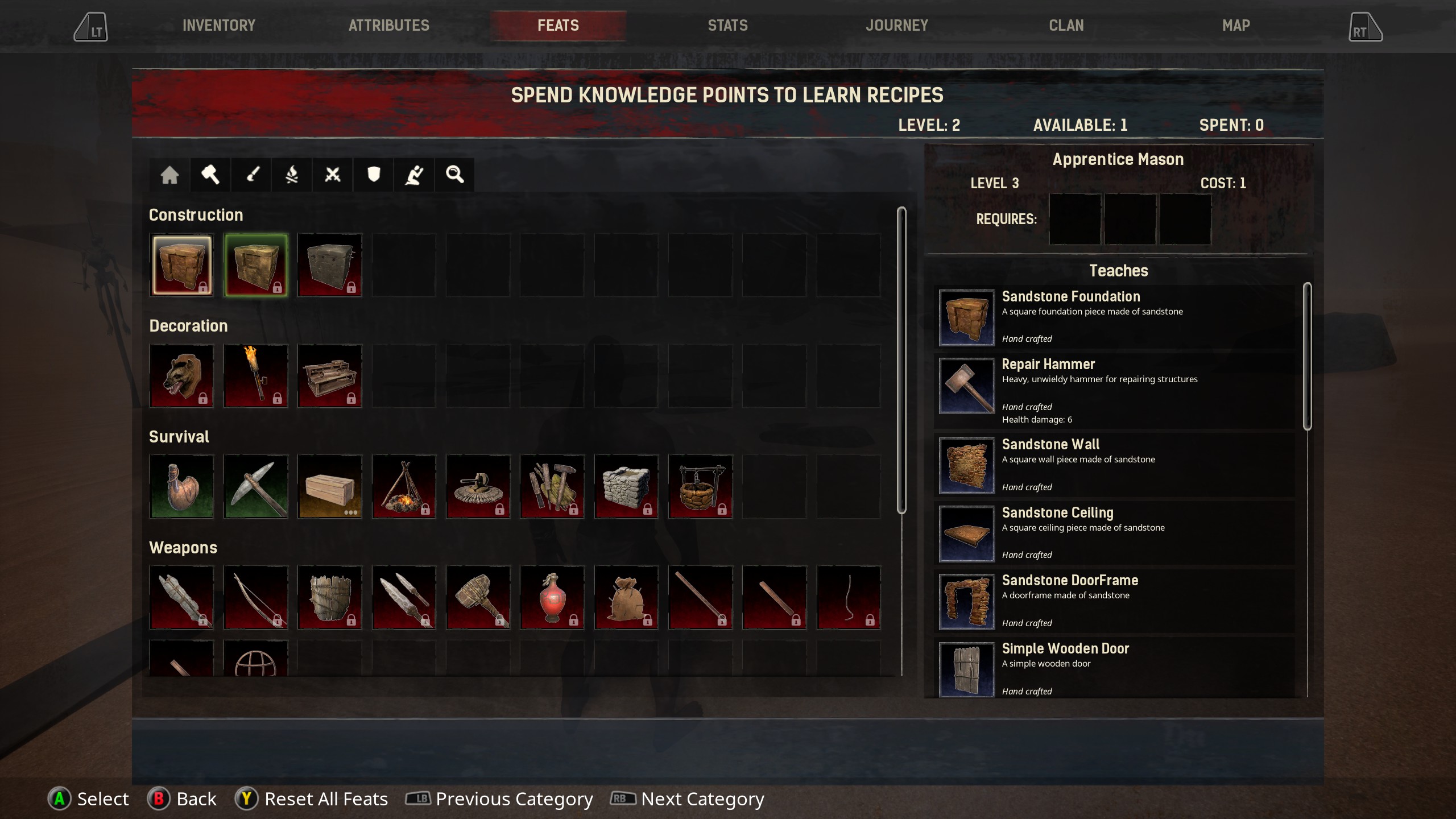
Feats
When you level up you also gain Knowledge Points. These are used to unlock feats that give you access to new crafting recipes. Each exile has a limited amount of feats they can unlock and some have prerequisites that need to be fulfilled before they’re available. The first tab in the Feats menu is a collection of some of the most common feats, so look through the other tabs to find more. Your spent Attribute Points and Knowledge Points are permanent until you’re able to craft a specific potion that lets you reset your spent points. .

The Purge
As you and your clan kill other players, build huge structures, gather resources and are active in the game a meter will start filling up at the bottom of the inventory screen. Once this meter hits a certain threshold you may be targeted by a Purge. During the Purge monsters, animals, humans and others, depending on where you've built, will appear and attack. Once a Purge has been initiated the only way to stop it is to drive them back or until they've spent enough time attacking your homestead.
On official servers, Purges will only trigger during certain hours of the day. Admins of private servers will be able to adjust the Purge times either through server setting GUI or modifying the serversettings.ini files.
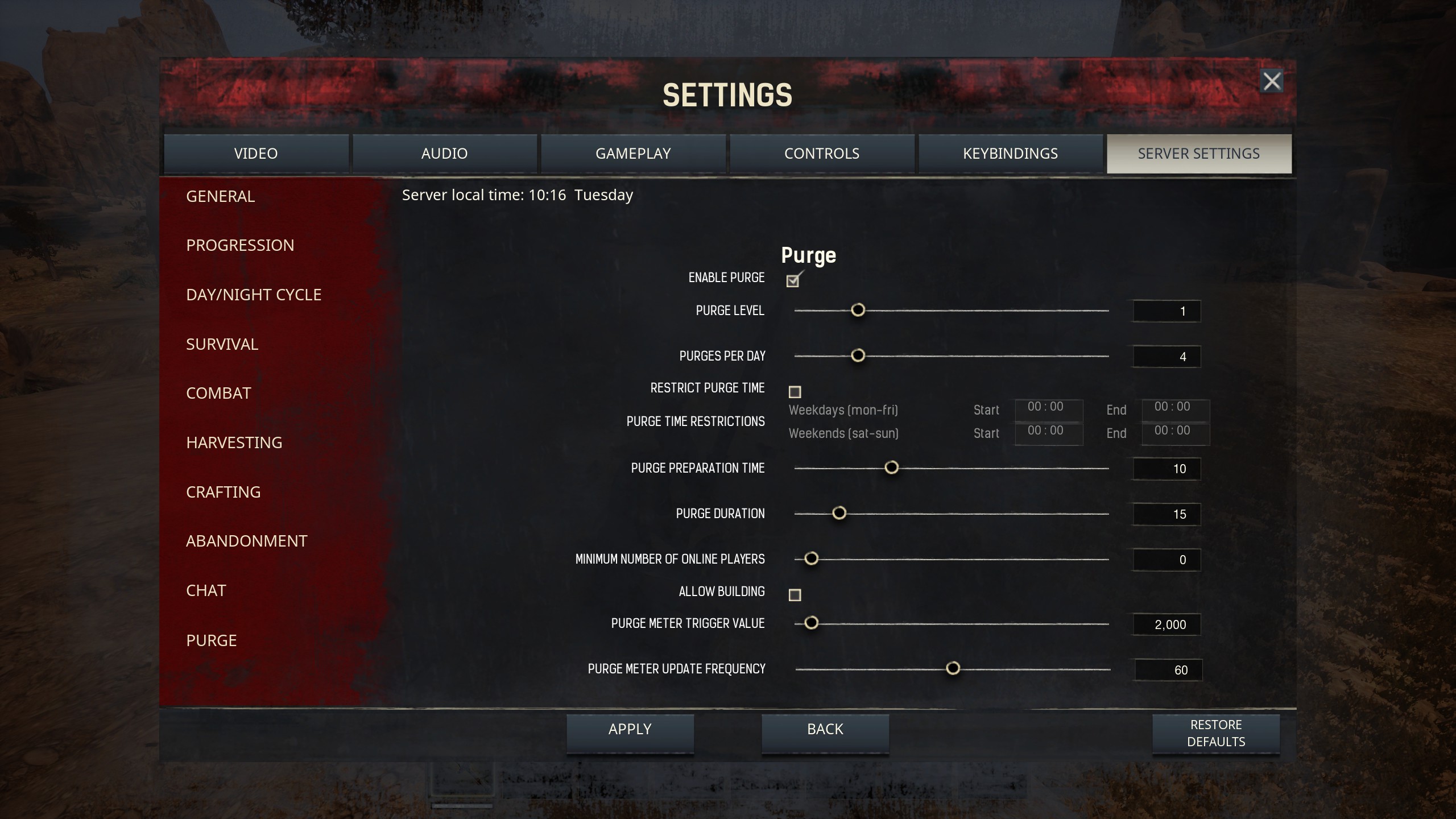
In general purges become more difficult the further north your base is on the map. Higher difficulty purges will contain special bosses with unique loot, or special crafter NPCs that have unique recipes on them. You will need a combination of smart base design, thrall defenders, higher tier buildings and good teamplay to withstand the most difficult purges.
If you find the purge to be too easy or difficult, you can change the difficulty as well as many other parameters in the options-menu.
Jump
Dodge roll
Crouch
Interact
Open Shortcut Radial Menu
Light melee attack / Place Building Piece / Quick Fire Bow
Offhand Attack / Kick / Block (When holding shield) / Rotate Building Piece / Lower Building Piece (After pressing Y in Building Mode)
Heavy melee attack / Precise Bow Attack / Rotate Building Piece / Raise Building Piece (After pressing Y in Building Mode)
Move (Press to sprint)
Look / Auto Align Building Piece (Press) / Target Lock (Press)
Look / Auto Align Building Piece (Press) / Target Lock (Press)
D-pad down – Toggle Emotes
Toggle Main Menu
Toggle Inventory
Go Home